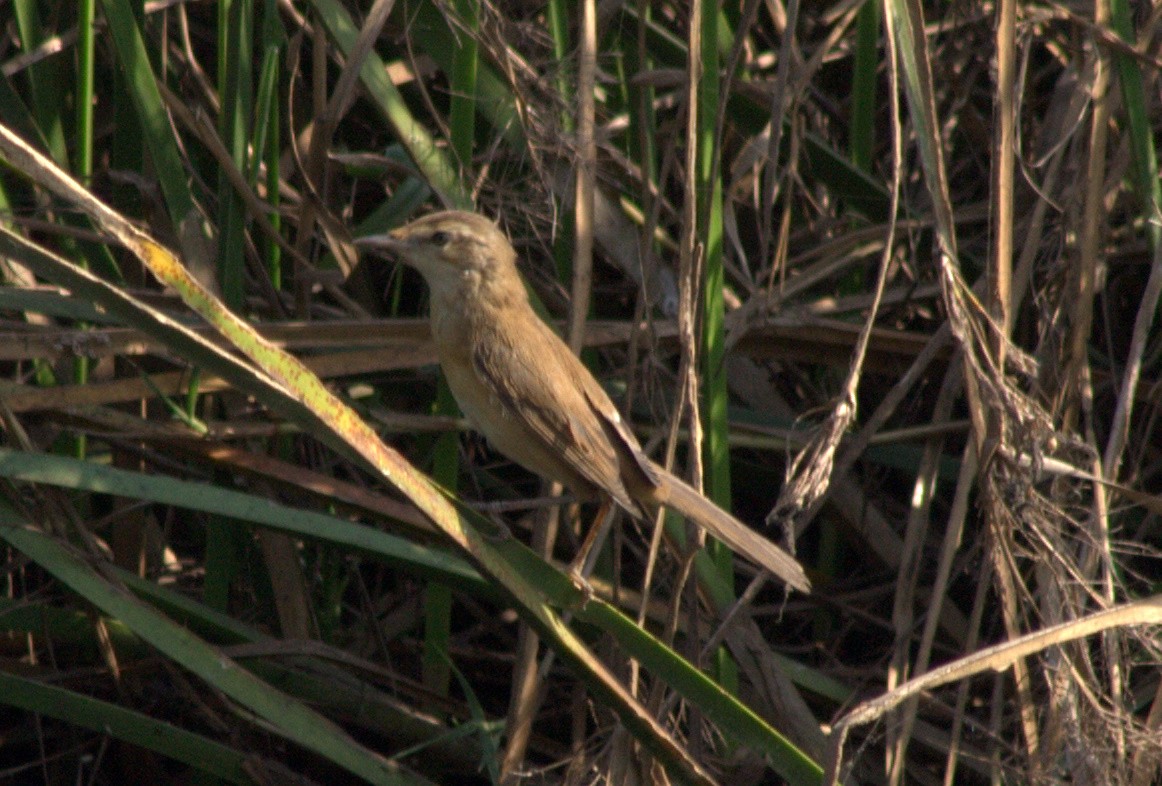Paddyfield Warbler
A species of Reed-warblers Scientific name : Acrocephalus agricola Genus : Reed-warblers
Paddyfield Warbler, A species of Reed-warblers
Botanical name: Acrocephalus agricola
Genus: Reed-warblers
Content
Description General Info
 Photo By Dr. Raju Kasambe , used under CC-BY-SA-3.0 /Cropped and compressed from original
Photo By Dr. Raju Kasambe , used under CC-BY-SA-3.0 /Cropped and compressed from original Description
The paddyfield warbler (Acrocephalus agricola) is a species of marsh warbler (family Acrocephalidae). It was formerly included in the "Old World warbler" assemblage. The Manchurian reed warbler (A. tangorum) was (and sometimes still is) included in A. agricola as a subspecies. The genus name Acrocephalus is from Ancient Greek akros, "highest", and kephale, "head". It is possible that Naumann and Naumann thought akros meant "sharp-pointed". The specific agricola is from Latin and means "farmer". It breeds in the temperate central Palearctic. It is migratory, wintering in Bangladesh, India and Pakistan. It is a rare vagrant to western Europe although there are small breeding populations along the western shores of the Black Sea around the border between Bulgaria and Romania. This passerine bird is a species found in low vegetation such as long grass, reeds and rice. 4–5 eggs are laid in a nest in grass. At 13 centimetres (5.1 in) long with a wingspan of 15–17.5 centimetres (5.9–6.9 in), Paddyfield is close in size to the Eurasian reed warbler but with shorter bill and wingspan. The adult has an unstreaked pale brown back and buff underparts, with a warm brown rump. There is a clearer whitish supercilium and the bill is short and pointed. The sexes are identical, as with most warblers, but young birds are richer buff below. Like most warblers, it is insectivorous. The song is fast and similar to marsh warbler, with much mimicry and typically acrocephaline whistles added. Its song is weaker and more rhythmic than that of its relative. 
Size
13 cm
Nest Placement
Shrub
Feeding Habits
Paddyfield Warbler mainly consumes insects, including mayflies, dragonflies, and caddis flies. Foraging near water and reeds allows paddyfield Warbler to catch prey from surfaces or through acrobatic flycatching from vegetation.
Habitat
Paddyfield Warbler favors reed-dominated habitats such as open reedbeds and marshes with vegetation like Phragmites, reedmace, and Tamarix, primarily along lake shores and river valleys. In winter, it occupies wet areas with dense cover, including rice fields and sugar cane fields. During migration, marshy meadows and thickets across flatlands and valleys serve as temporary habitats.
Dite type
Insectivorous
General Info
Feeding Habits
Bird food type
Species Status
Not globally threatened.
Scientific Classification
Phylum
Chordates Class
Birds Order
Perching birds Family
Reed warblers Genus
Reed-warblers Species
Paddyfield Warbler